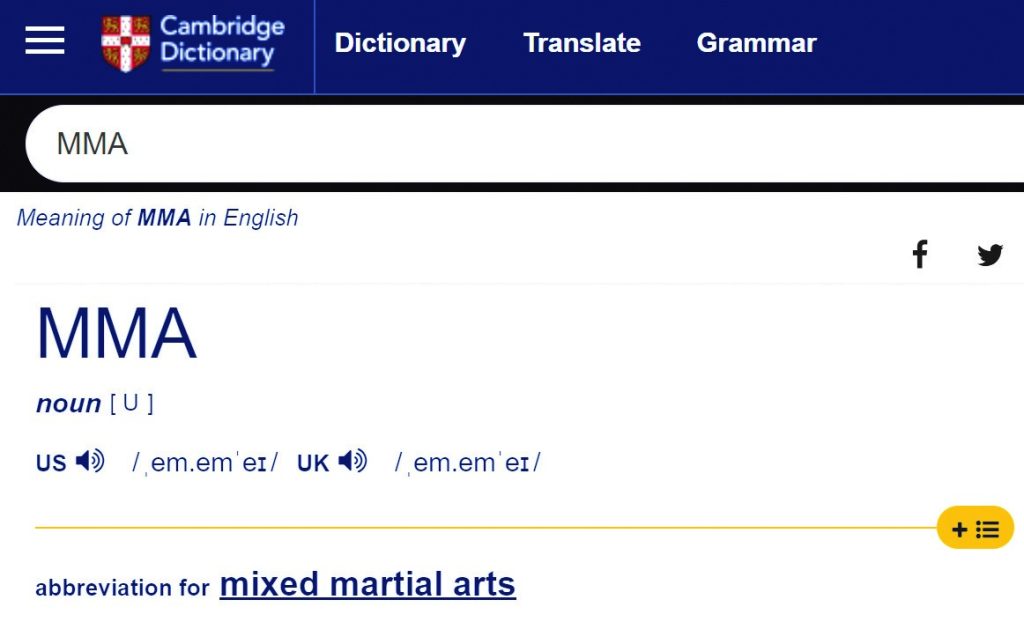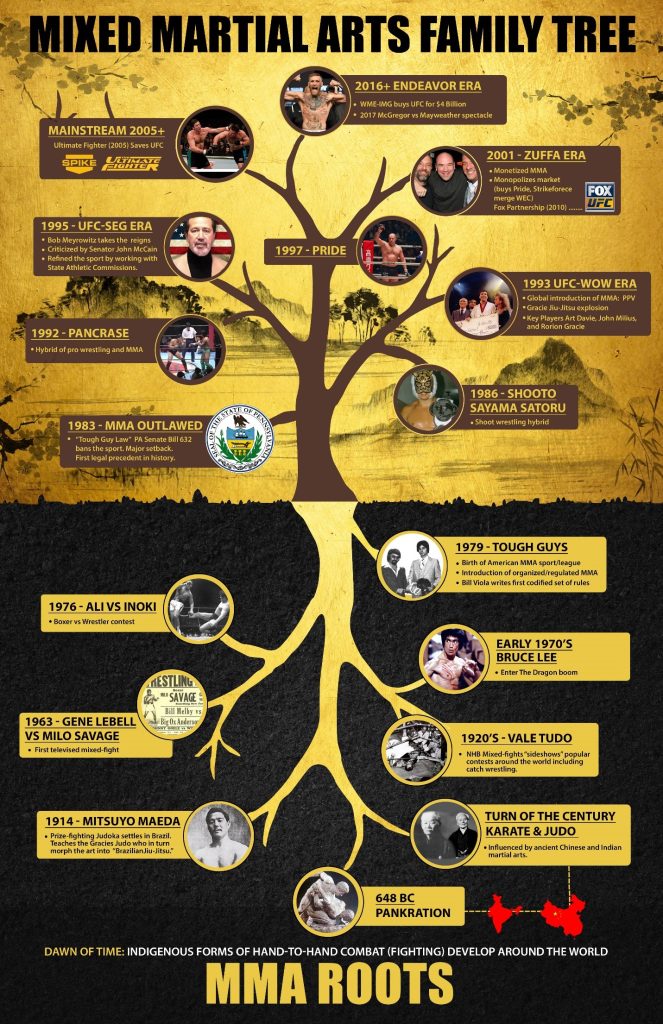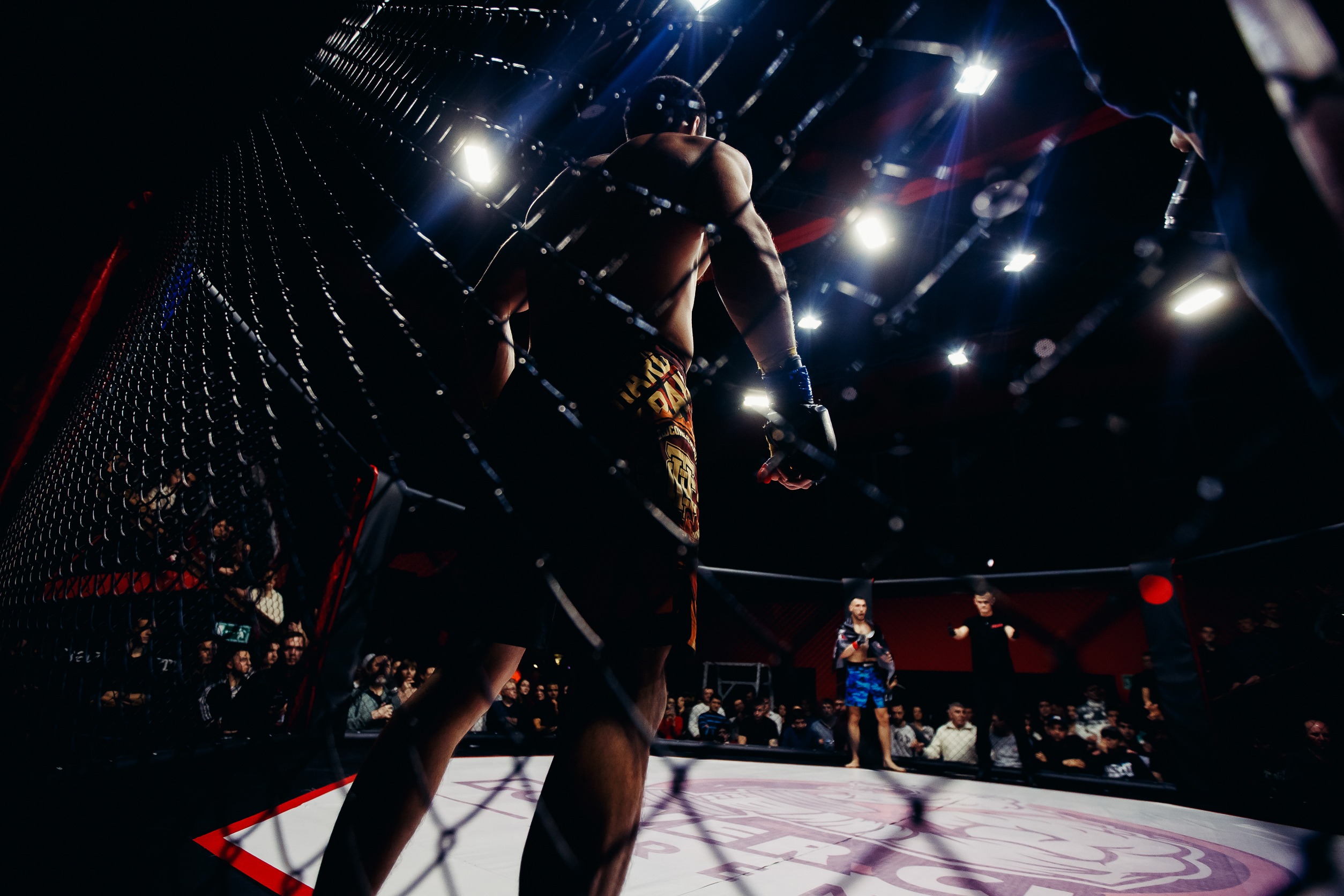Who created the term MMA?
The term Mixed Martial Arts is a modern phrase to descried the sport of combined fighting. So what’s in a name?

Who coined the phrase MMA? Mixed Martial Arts is a modern term for an age old combat sport. From 1979-1983 the “sport” of MMA was in its infancy and mixed-fights were commonly referred to as: “combined martial arts” or “combined fighting” competitions. For the purposes of this site the term “Mixed Martial Arts” and its acronym “MMA” will be used as a synonym to describe all pre-UFC such as CV (Caliguri and Viola) Productions Inc. fighting events and concepts, although technically the terminology was not popular at the time.
Some authorities on the subject claim that the earliest usage of term “Mixed Martial Arts” dates from Japanese Professional Wrestling circles in the 1970s, although it is difficult to find any conclusive evidence.
The earliest printed examples of the term was its use by Pulitzer Prize winning journalist Howard Rosenberg in his Los Angeles Times article: “’Ultimate’ Fight Lives Up to Name: Television: Pay-Per-View Battle, Instead of Being Merely Gory and Funny, Gets Interesting After the First Two Bouts.” (November 15th 1993). The excerpt reads, “St. Louis cruiserweight boxer Art Jimmerson didn’t get to throw even one punch before giving up. He was swiftly taken down and dispatched with a chokehold by jujitsu master Royce Gracie, whose family is synonymous with the sport in their native Brazil, where mixed-martial arts championships like this one are commonplace.”
Many experts have then credited former UFC Commentator Jeff Blatnick with popularizing the term on-air in the early 1990s in an effort to remove the stigma of violence associated with names like, no-holds- barred or cage fighting.
Loretta Hunt, author of the book, Let’s Get It On, claims that “Big John” McCarthy is responsible for naming the sport, stating its origin stems from an LAPD work permit that McCarthy filled out to work UFC 2. Hunt explained, “It was called ‘No Holds Barred’ or ‘Ultimate Fighting’ back in the early days. Himself and Jeff Blatnick – a former commentator for the UFC – came up with the ‘Mixed Martial Arts’ name, but it was John’s phrase. And Jeff Blatnick is the one who pushed it on the pay-per-views until people really started picking it up.”
As the debate continues, most experts can agree that early forms of mixed-fighting (i.e. a combination of both stand up and ground fighting) like that of CV Productions are now universally accepted and commonly categorized under the MMA banner today.

Jūjutsu “Gentle Art”
“Jū” 柔 can be translated as gentle, flexible, pliable, soft or yielding, referring to both the mind and body, while “Jutsu” 術 simply put means art.Jutsu” 術 simply put means art. Influenced by the Samurai of feudal Japan, jūjutsu is an unarmed method of self-defense that manipulates the force or energy of an adversary. Techniques are used to effectively neutralize and disable opponents through a series of grappling maneuvers, pins, joint locks, throws and various submissions.
The Japanese word jūjutsu is often spelled: jujitsu, ju-jitsu, jiujitsu, and jiu-jitsu etcetera. The different variations have caused confusion among the general public and casual martial arts fans. There is no difference in ideology between the words. The Japanese language uses ideograms (Kanji) and the Romanization of the word wasn’t universal, so phonetic spellings became common to describe the martial art. “Jiu-jitsu” is an older Romanization whereas “jūjutsu” is the modern Hepburn Romanization. This book will use various spellings based on context.
Jūdō “Gentle Way”
The word jūdō shares the same root kanji as jūjutsu “jū” while “do” 道 means way, road or path. The latter character also translates as “tao” in Chinese, giving it a more philosophical or spiritual nuance. Judo is a descendant jūjutsu, once referred to as “Kano jiu-jitsu,” after its founder Jigoro Kano. In the early 20th century, what we call judo today was also commonly spelled “jiudo.”
Today, many martial arts fans mistakenly believe that the “jiu” in Brazilian jiu-jitsu is of some unique Portuguese descent, however the art and its spelling was a derivative of Kano’s jiudo/jiu-jitsu and adopted the traditional Japanese prefix and spelling.


